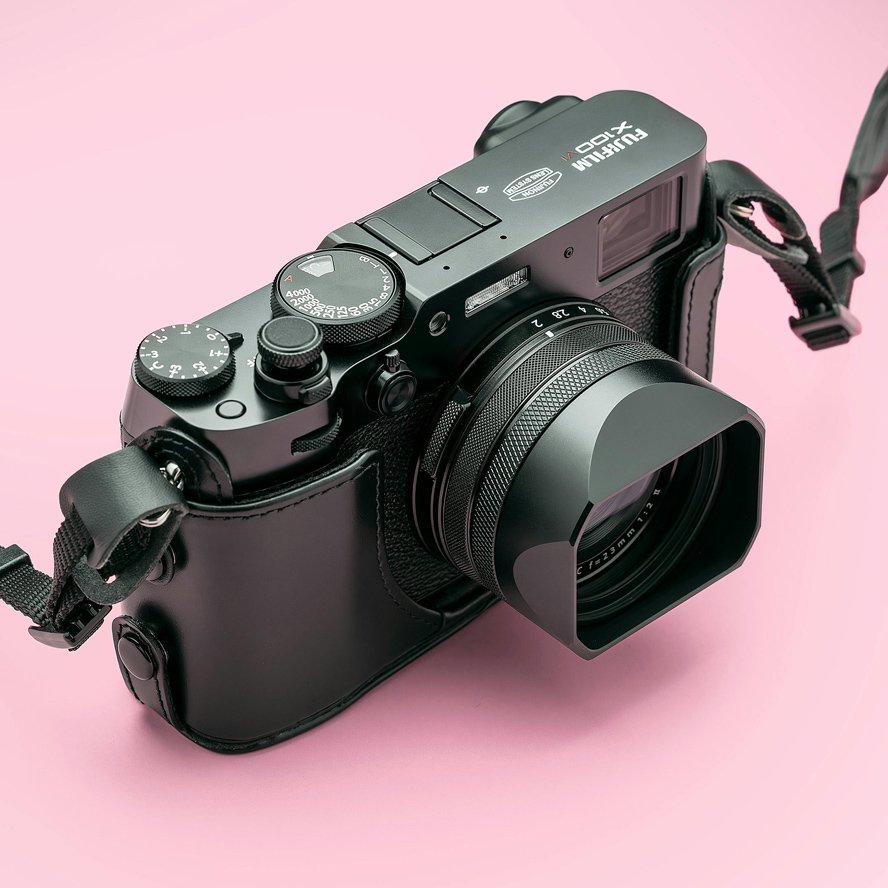What to know before you buy your first digital camera
Are you considering the purchase of a digital camera and don't know where to start? There are certain key features you should look for (and expect) in a digital camera without the need to spend thousands of dollars.
Better and cheaper technology has made it easier than ever to get terrific quality images without needing to buy a super high-end pro camera.
Image quality
Whatever camera there is, the megapixels help dictate the quality of the image, making them a key to selecting a camera. Megapixels are the number of pixels in a final image file. However, it's not the only spec to look for, particularly if you're looking to buy a higher-end camera.
The size of the sensor of the camera also has a significant impact on image quality. The larger the sensor, the more light it picks up. That gives you better images. The larger sensor also provides more depth of field options, a big plus for portrait photographers. As you can probably guess, the larger the sensor, the pricier the camera.
Full-frame sensors are the largest (the sensor is the size of a 35mm piece of film), followed by APS-C, 1.5-inch, and then Micro Four Thirds. One-inch sensors are found in higher-end compacts.
Here's what else you should know about digital cameras.
Camera types
Point-and-shoot: Basically, you have two kinds of cameras: those with interchangeable lenses and those without. The ones without lenses you can exchange are called point-and-shoot or compact cameras.
They tend to be more popular with novice photographers just getting their feet wet or those that just want simple shooting without the encumbrances of other camera equipment or accessories. Most point-and-shoots range in price from just under $100 to $1,000.
Different companies have different names for this type of camera like compact system camera (CSC) or mirrorless interchangeable-lens camera (MILC), but in the end, the category represents any camera that can swap lenses and doesn't have a mirror inside.
DSLR ( digital single-lens reflex): If you want more than what point-and-shoot offers with more flexibility, you'll have to move up to either a DSLR or a mirrorless camera. The DSLRs use the camera's viewfinder to show you what the camera's mirror-and-prism system is seeing before you shoot.
Mirrorless cameras don't have the mirror, instead, using the camera's imaging sensor and a viewfinder or the rear LCD screen for composing your shots. These types have been catching up in quality and performance to DSLRs. However, you typically have far more options when it comes to lenses if you own a DSLR.
Different manufacturers call their cameras different names. Some are called CSC (compact system camera) or mirrorless interchangeable-lens camera (MILC). Their pricing can start at around $300-$400 and go up over $6,000 for a pro-level DSLR and over $4,000 for a high-end mirrorless body, no lens included.
"Bridge" cameras are a level between point-and-shoot cameras and the more advanced CSCs and DSLRs. Bridge cameras tend to have more robust features than a point-and-shoot, including better manual controls and zoom levels. If you can pay a bit more for a camera, a Bridge Camera could be a good option. Prices range from a few hundred dollars to over $1,000.
Digital lenses
It's good to know the technical terms of lens specs when shopping for cameras - whether it's a fixed lens or interchangeable lens camera. Things to note:
The f-number tells you how wide the lens aperture opens to allow light in, and the wider, the better.
Keep in mind, however, that a LOWER f-number actually means a wider aperture.
The f-number has a significant impact on the depth of field. This means that the wider you open, the shorter or less the depth of field you will get - more background blur will be visible. (It's the reason, so many portrait photographers use a fast lens.)
Non-zoom lenses typically open wider than those that do zoom.
The focal length indicates the angle of view you'll get from a lens. A fairly standard zoom you get with most entry- mid-level kit lenses is a focal range of 18-55mm.
Making a selection
It can be a challenge to select a digital camera, especially if it's your first, and you plan on paying upwards of several hundred dollars. The information above is a basic primer of features and details to note when you first start considering a camera.
A few other tips to consider
Talk to camera professionals at a specialty shop. Don't be strong-armed into making an immediate purchase, however. Consider the visit a fact-finding mission of sorts. Ask a lot of questions.
Read user reviews online to see what others are saying. What is their experience using a particular camera? Pros and cons?
Additionally, depending on the level of camera, it's often possible to rent a camera for a short time. This is an excellent way to get a sense for what it can do and how you feel about it. You can, of course, also borrow a camera from someone to try it out.
Save some money by buying a used or refurbished camera just a few years old. Yes, the technology might be a bit older, but you will save yourself some money.
Today you can get a lot more for your money when buying a digital camera. The technology is more advanced than ever. Do some research, have some fun in the process, and good luck shooting!




















